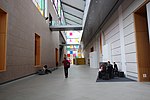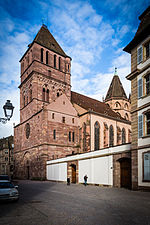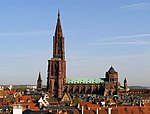Petite France, Strasbourg

La Petite France, in Alsatian dialect: Französel (also known as the Quartier des Tanneurs; German: Gerberviertel; "Tanner's Quarter") is the south-western part of the Grande Île of Strasbourg in Alsace in eastern France, the most central and characteristic island of the city that forms the historic center. The district is bounded to the north by the Quai de la Bruche (Brischstade), the rue du Bain-aux-Plantes, the Place Benjamin-Zix and the rue des Dentelles; to the east by the Rue du Pont-Saint-Martin, the Pont Saint-Thomas (Thomas Bridge) and the Mills footbridge; to the south by the Channel of Zorn-Mühle; to the west by the Covered Bridges. At Petite France, the river Ill splits up into a number of channels that cascade through an area that was, in the Middle Ages, home to the city's tanners, millers and fishermen, and is now one of Strasbourg's main tourist attractions. Petite France forms part of the UNESCO World Heritage Site of Grande Île, designated in 1988.
Excerpt from the Wikipedia article Petite France, Strasbourg (License: CC BY-SA 3.0, Authors, Images).Petite France, Strasbourg
Quai du Woerthel, Strasbourg Centre
Geographical coordinates (GPS) Address Nearby Places Show on map
Geographical coordinates (GPS)
| Latitude | Longitude |
|---|---|
| N 48.580833333333 ° | E 7.7405555555556 ° |
Address
Square des Moulins
Quai du Woerthel
67003 Strasbourg, Centre
Grand Est, France
Open on Google Maps









